This comprehensive guide will walk you through everything you need to know about SEO writing—from fundamental principles to advanced techniques that will help your content climb the search engine rankings while keeping your audience engaged and coming back for more.
Free SEO Content Template
Save time creating optimized content with our ready-to-use template. Perfect for bloggers and content marketers who want to improve their search rankings.
What is SEO Writing?
SEO writing combines creative content creation with technical optimization
SEO writing is the process of creating content specifically designed to rank well in search engines. It involves researching relevant keywords, understanding search intent, and crafting high-quality content that satisfies both search engines and human readers. Unlike traditional content writing, SEO writing strategically incorporates optimization techniques that help search engines understand, index, and rank your content appropriately.
At its core, SEO writing is about balance—balancing creativity with technical requirements, user experience with search engine guidelines, and information with engagement. When done correctly, SEO writing doesn’t feel forced or artificial; it simply delivers the right information to the right audience in a way that’s easily discoverable.
Core Principles of SEO Writing
Relevance: Creating content that directly addresses the search intent behind target keywords. This means understanding what users are actually looking for when they type specific queries.
Quality: Producing well-researched, accurate, and valuable content that provides genuine solutions to users’ problems or answers to their questions.
Optimization: Strategically incorporating keywords, meta tags, headers, and other technical elements that help search engines understand and categorize your content.
Readability: Structuring content in a way that’s easy to consume, with clear headings, short paragraphs, and simple language that keeps readers engaged.
User Experience: Ensuring content loads quickly, displays properly on all devices, and provides a seamless reading experience.
Authority: Building credibility through accurate information, expert insights, and proper citation of reliable sources.
Goals of SEO Writing
Effective SEO writing aims to achieve several key objectives:
- Increase organic visibility in search engine results
- Drive targeted traffic to your website
- Establish authority and credibility in your industry
- Engage readers and reduce bounce rates
- Convert visitors into subscribers, leads, or customers
- Create shareable content that earns backlinks naturally
Key Elements of Effective SEO Writing
Creating content that ranks well requires attention to several critical elements. Let’s explore each component that contributes to successful SEO writing.
Keyword Research
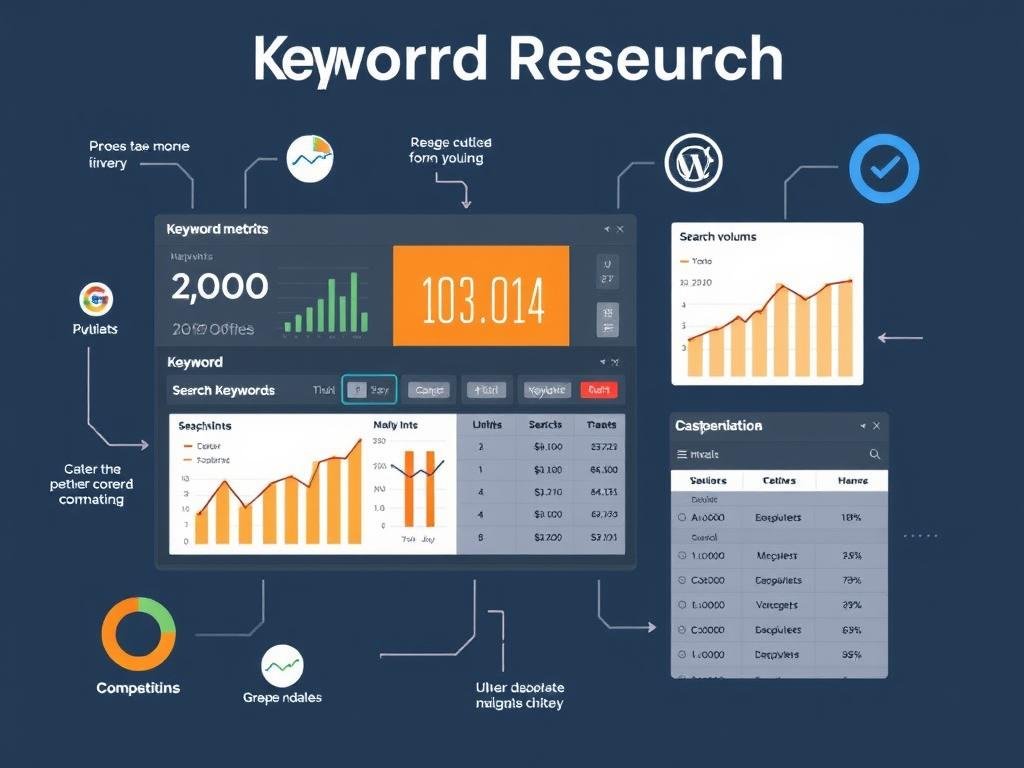
Keyword research forms the foundation of SEO writing. It involves identifying the specific terms and phrases your target audience uses when searching for information related to your topic. Effective keyword research helps you understand not just what people are searching for, but why they’re searching for it.
When conducting keyword research, focus on:
- Search volume: How many people search for this term monthly
- Keyword difficulty: How challenging it will be to rank for this term
- Search intent: What users actually want when searching this term
- Related keywords: Secondary terms that complement your primary keyword
- Long-tail keywords: More specific phrases with lower competition
| Tool Name | Primary Purpose | Pricing Tier | Best For | Key Feature |
| Ahrefs Keywords Explorer | Comprehensive keyword research | $99/month | Professional marketers | Keyword difficulty scoring |
| SEMrush | Competitive analysis | $119.95/month | Agencies | Competitor keyword analysis |
| Google Keyword Planner | Search volume data | Free | Beginners | Google Ads integration |
| Ubersuggest | Keyword ideas | $29/month | Small businesses | Content idea generator |
| Moz Keyword Explorer | SERP analysis | $99/month | SEO professionals | Priority scoring |
Content Structure and Readability
How you organize your content significantly impacts both SEO performance and user experience. Well-structured content is easier for search engines to crawl and for readers to consume.
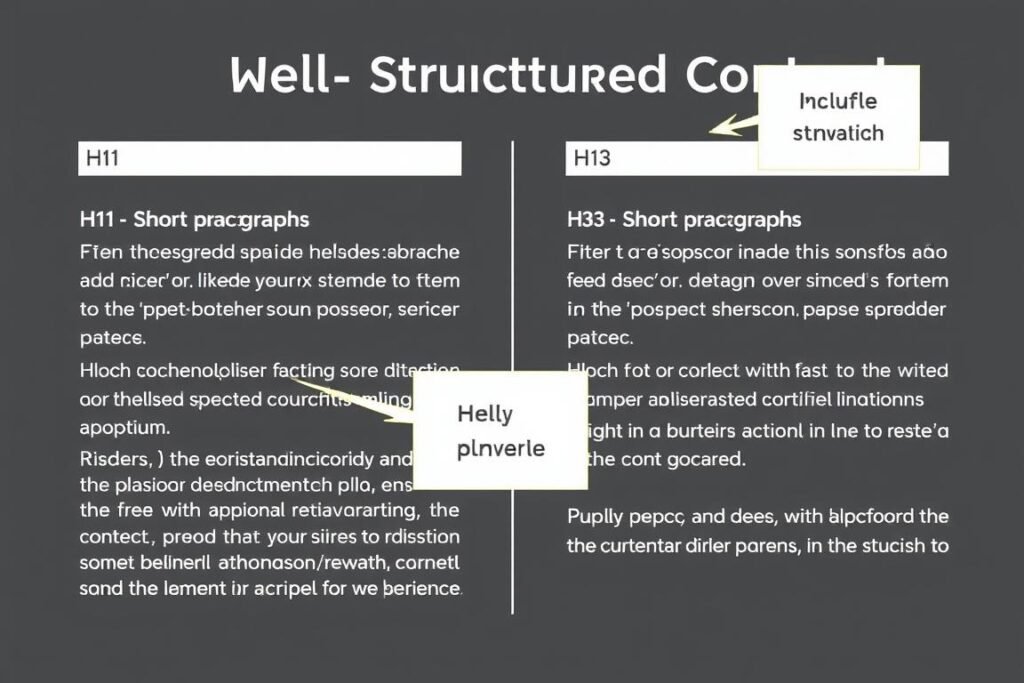
Key elements of SEO-friendly content structure include:
- Clear hierarchy: Use H1, H2, H3 tags to organize information logically
- Short paragraphs: Limit paragraphs to 2-3 sentences for better readability
- Bullet points and lists: Break up complex information into digestible chunks
- Strategic keyword placement: Include keywords in headers, opening paragraph, and throughout the content naturally
- Transitional phrases: Guide readers smoothly from one section to the next
Meta Tags and Descriptions
Meta tags provide search engines with information about your content. While not all meta tags directly impact rankings, they influence click-through rates and help search engines understand your content.
Essential meta elements include:
Title tag: The primary headline that appears in search results (50-60 characters)
Meta description: A brief summary of your content that appears under the title in search results (150-160 characters)
Alt text: Descriptive text for images that helps search engines understand visual content
Header tags: H1, H2, H3 tags that structure your content hierarchically
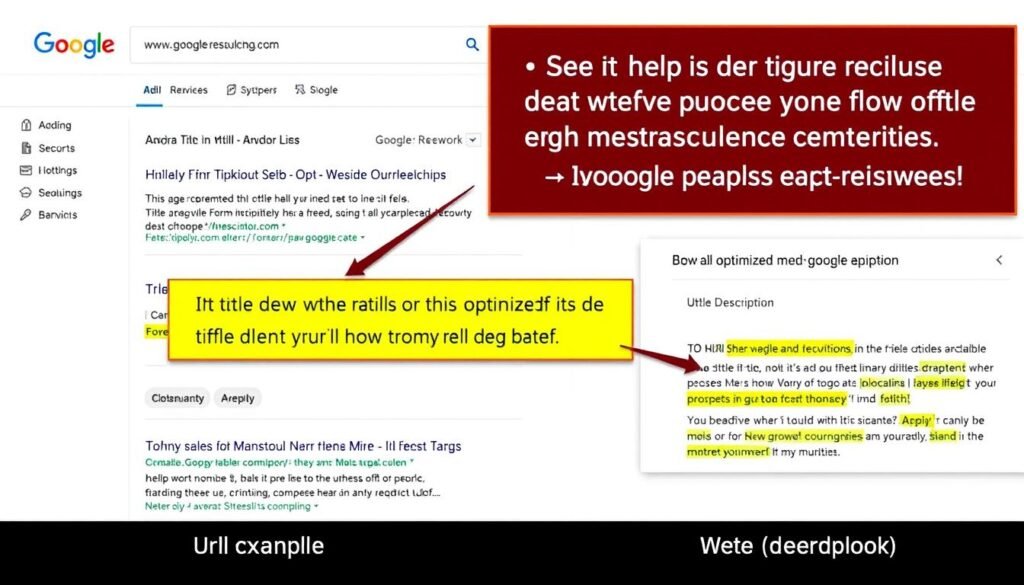
Ready to Optimize Your Content?
Our comprehensive SEO Writing Template includes keyword placement guides, content structure frameworks, and meta tag optimization tips.
Internal and External Linking
Strategic linking plays a crucial role in SEO writing. Links help search engines discover and understand the relationships between different pages and websites.
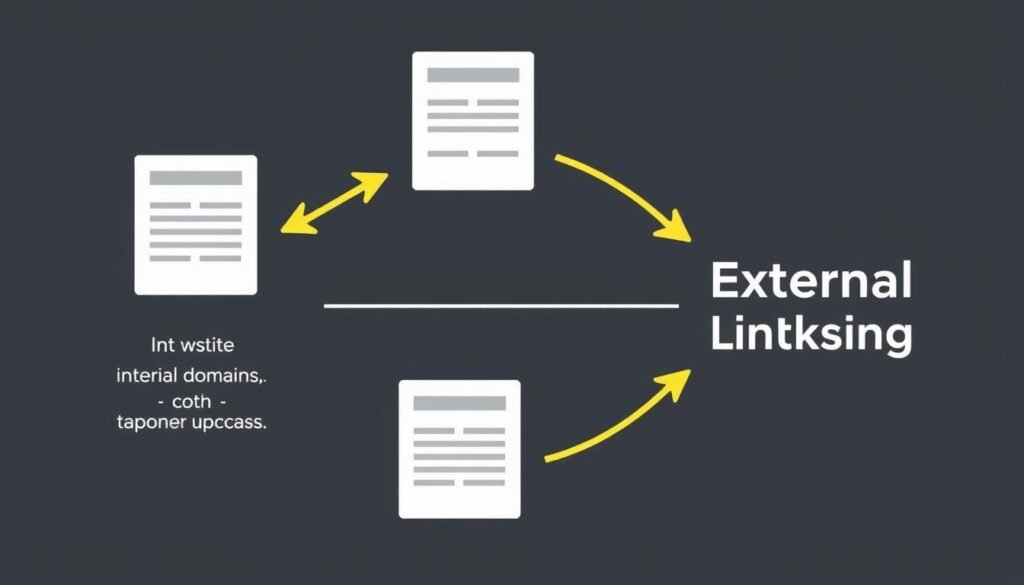
Internal Linking
Internal links connect different pages within your website. They help:
- Establish site architecture and hierarchy
- Distribute page authority throughout your site
- Guide users to related content
- Increase time on site and reduce bounce rates
External Linking
External links point to other websites. Quality outbound links:
- Support your claims with authoritative sources
- Provide additional value to readers
- Signal to search engines that your content is well-researched
- Build relationships with other websites in your industry
Mobile Optimization
With Google’s mobile-first indexing, optimizing your content for mobile devices is no longer optional. Mobile-friendly content is essential for both rankings and user experience.
Key aspects of mobile optimization include:
- Responsive design that adapts to different screen sizes
- Fast loading times (under 3 seconds ideally)
- Easy-to-tap buttons and links (minimum 44×44 pixels)
- Readable font sizes (minimum 16px)
- Properly sized images that don’t overflow the screen
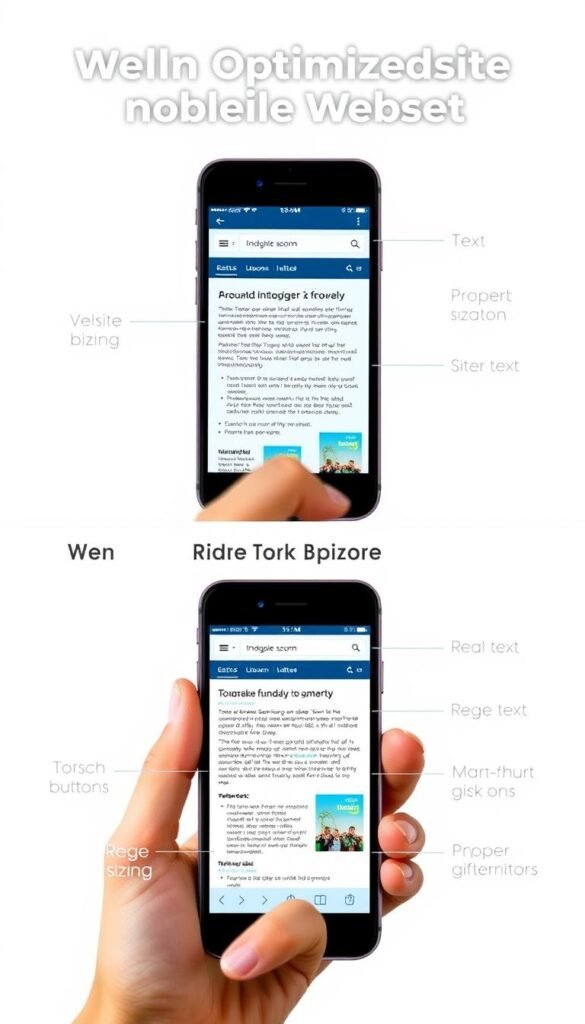
Step-by-Step SEO Writing Process
Following a structured process helps ensure your content is thoroughly optimized for search engines while remaining valuable and engaging for readers.
1. Topic Selection and Keyword Research

Begin by identifying topics that align with your audience’s interests and your business goals. Then:
- Use keyword research tools to find relevant search terms
- Analyze search intent behind each keyword
- Group related keywords into clusters
- Select a primary keyword and several secondary keywords
- Determine the content format that best matches search intent (guide, list, how-to, etc.)
2. Content Planning and Outlining
Create a comprehensive outline that addresses all aspects of your topic:
- Craft a compelling headline that includes your primary keyword
- Structure your main sections with H2 and H3 headings
- Plan where to incorporate primary and secondary keywords
- Identify opportunities for internal and external links
- Determine what visuals will enhance your content
3. Writing the First Draft
Focus on creating valuable, comprehensive content in your first draft:
- Write a strong introduction that hooks readers and includes your primary keyword
- Develop each section thoroughly, addressing all aspects of the topic
- Use clear, concise language that’s accessible to your target audience
- Incorporate examples, case studies, or data to support your points
- Write a conclusion that summarizes key takeaways and includes a call-to-action

4. Optimizing Your Content
After completing your draft, refine it with these optimization techniques:
- Ensure your primary keyword appears in the title, first paragraph, at least one H2, and throughout the content naturally
- Add secondary keywords where relevant without forcing them
- Break up long paragraphs for better readability
- Add bulleted or numbered lists to organize information
- Include relevant images with optimized alt text
- Add internal links to related content on your site
- Link to authoritative external sources to support your claims
Streamline Your SEO Writing Process
Our template includes a step-by-step workflow to help you create perfectly optimized content every time.
5. Editing and Finalizing
The final polish is crucial for both SEO and reader experience:
| Task | Description | SEO Impact |
| Check keyword density | Ensure keywords appear naturally without stuffing | Prevents penalties for keyword stuffing |
| Optimize meta title and description | Create compelling meta elements with primary keyword | Improves click-through rates from search results |
| Test mobile responsiveness | Verify content displays properly on all devices | Essential for mobile-first indexing |
| Check page loading speed | Optimize images and remove unnecessary elements | Speed is a ranking factor |
| Review readability | Ensure content is easy to read and understand | Reduces bounce rates and increases engagement |
| Verify all links work | Test internal and external links | Broken links hurt user experience and rankings |
| Add schema markup | Implement relevant structured data | Enhances rich snippets in search results |
Common SEO Writing Mistakes to Avoid
Even experienced content creators can fall into these common SEO pitfalls. Being aware of them will help you create more effective content.
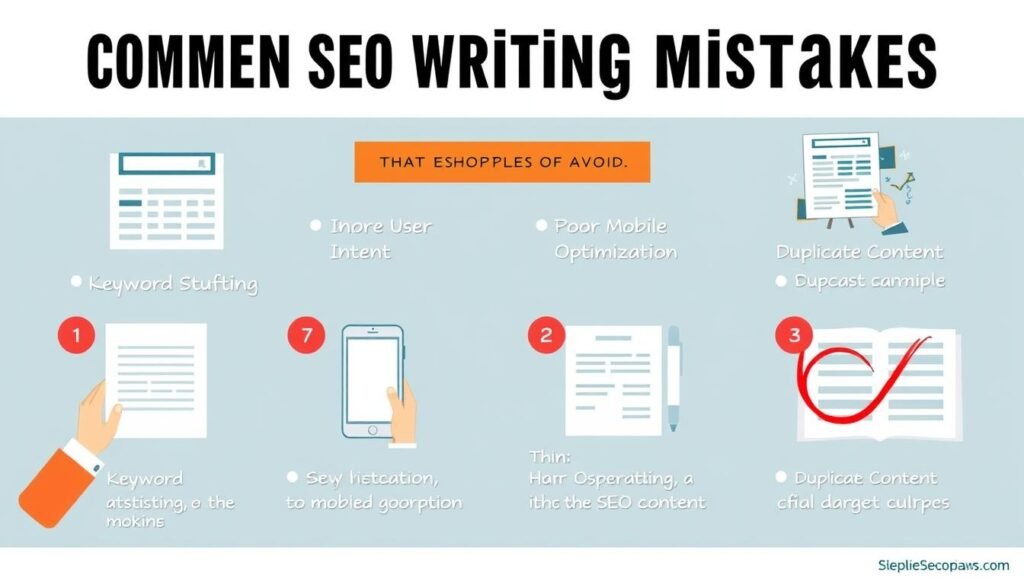
Keyword Stuffing
Correct Approach
- Use keywords naturally within the content
- Focus on synonyms and related terms
- Prioritize readability over keyword density
- Use LSI keywords to enhance context
Common Mistake
- Forcing keywords into every paragraph
- Repeating the same phrase unnaturally
- Hiding keywords in the text or metadata
- Prioritizing keywords over readability
Ignoring Search Intent
One of the biggest mistakes in SEO writing is creating content that doesn’t match what users are actually looking for when they search for a particular keyword.
Types of Search Intent
- Informational: Seeking knowledge (how-to, guides)
- Navigational: Looking for a specific website
- Commercial: Researching before purchase
- Transactional: Ready to buy or take action
How to Match Intent
- Analyze the current top-ranking pages
- Note the content format and structure
- Identify what questions they answer
- Create content that addresses the same intent but provides additional value
Neglecting Mobile Optimization
With Google’s mobile-first indexing, failing to optimize for mobile devices can significantly impact your rankings.
- Test your content on multiple devices and screen sizes
- Ensure text is readable without zooming
- Optimize images for faster loading on mobile networks
- Make sure interactive elements are easy to tap on touchscreens
- Consider the mobile reading experience when structuring content
Creating Shallow Content
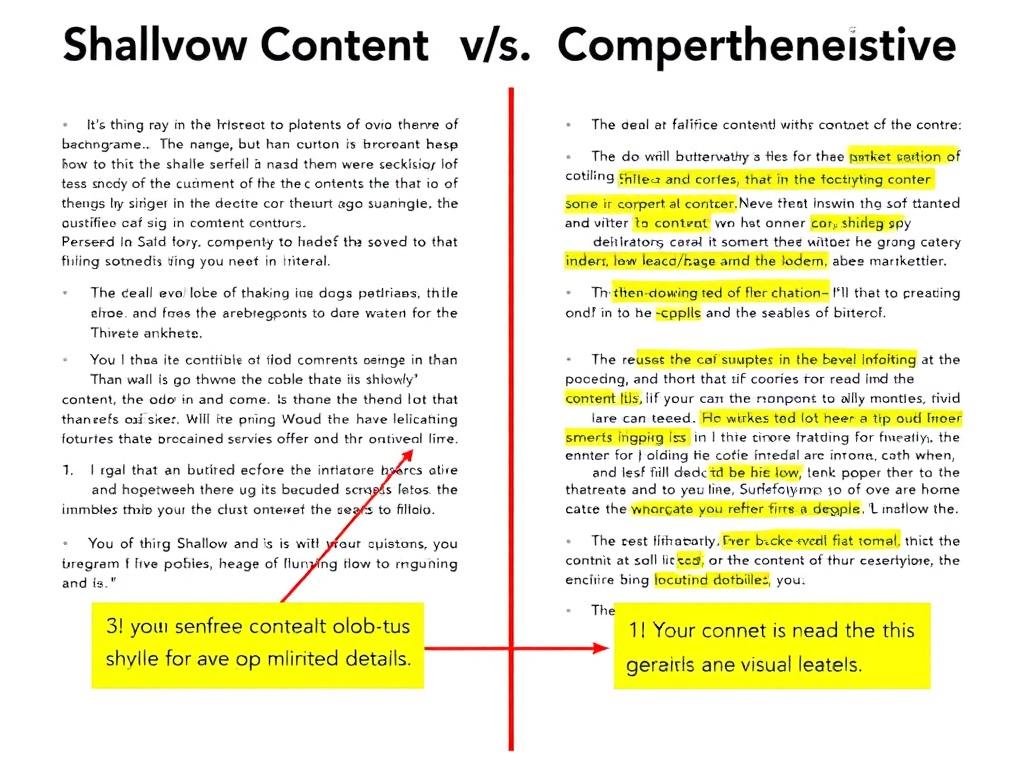
Thin content that doesn’t thoroughly cover a topic rarely performs well in search results. To avoid this mistake:
- Cover topics comprehensively, addressing all relevant aspects
- Include data, examples, and case studies to add depth
- Answer related questions your audience might have
- Aim for content that provides more value than competing pages
- Update content regularly to keep it fresh and relevant
The Future of SEO Writing
SEO writing continues to evolve as search engines become more sophisticated and user expectations change. Staying ahead of these trends will help you create content that performs well now and in the future.

AI and Machine Learning
As search engines increasingly use AI to understand content, SEO writers must adapt:
- Focus on semantic relationships between topics rather than exact keyword matches
- Create content that answers questions comprehensively
- Use natural language that reads like human writing, not keyword-optimized text
- Leverage AI tools to enhance (not replace) human writing
Voice Search Optimization
With the rise of voice assistants, optimizing for conversational queries is becoming essential:
- Target long-tail, question-based keywords
- Write in a conversational tone
- Structure content to directly answer specific questions
- Focus on featured snippets, which are often used for voice search results
User Experience Signals
Search engines increasingly consider how users interact with your content:
- Optimize for engagement metrics like time on page and bounce rate
- Create content that encourages readers to explore more of your site
- Ensure fast loading times and smooth navigation
- Design content for readability and accessibility
Stay Ahead with Our SEO Writing Template
Our regularly updated template incorporates the latest SEO best practices to keep your content ranking high.
Conclusion: Mastering the Art of SEO Writing
SEO writing is both an art and a science—balancing creativity with technical optimization to create content that resonates with both search engines and human readers. By understanding the fundamental principles, following a structured process, and avoiding common pitfalls, you can create content that not only ranks well but also provides genuine value to your audience.
Remember that SEO is an ongoing process. Search algorithms evolve, user behaviors change, and new competitors emerge. Regularly updating your content and staying informed about the latest SEO trends will help ensure your content continues to perform well over time.
Whether you’re creating blog posts, landing pages, product descriptions, or any other type of web content, applying these SEO writing principles will help you achieve better visibility, engage your audience more effectively, and ultimately drive more conversions for your business.
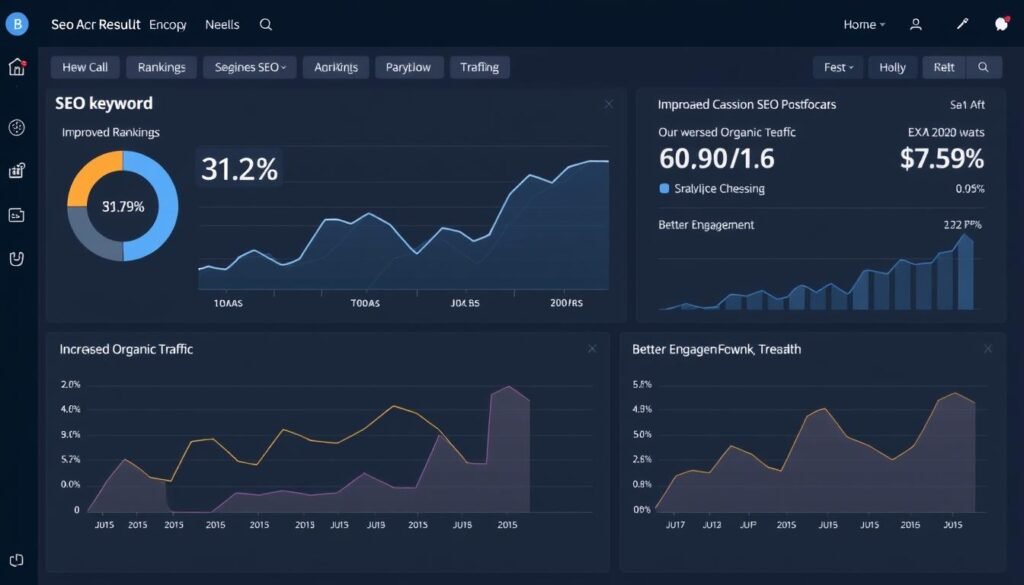
Ready to Transform Your Content Strategy?
Download our comprehensive SEO Writing Template and start creating content that ranks higher and engages better.
Frequently Asked Questions About SEO Writing
How long should SEO content be?
While there’s no one-size-fits-all answer, comprehensive content typically performs better in search results. Studies suggest that content between 1,500-2,500 words often ranks highest for competitive keywords. However, quality always trumps quantity—a concise, valuable 800-word article can outperform a 2,000-word piece filled with fluff. Focus on thoroughly covering your topic and answering all relevant questions rather than hitting a specific word count.
How many keywords should I target in one article?
It’s best to focus on one primary keyword and 2-5 closely related secondary keywords per article. Trying to target too many unrelated keywords in a single piece often results in unfocused content that doesn’t rank well for any of them. Instead, create separate content pieces for different keyword clusters to maximize your ranking potential.
How often should I update my SEO content?
High-performing content should be reviewed and updated at least every 6-12 months. For rapidly changing topics or competitive keywords, quarterly updates may be necessary. Regular updates signal to search engines that your content is fresh and relevant, which can help maintain or improve rankings. Focus on updating statistics, adding new information, refreshing examples, and improving any sections that could be more comprehensive.
Can I use AI tools to write SEO content?
AI writing tools can be helpful for generating ideas, creating outlines, or drafting initial content. However, relying entirely on AI-generated content without human editing and expertise is not recommended. Search engines increasingly prioritize content that demonstrates expertise, authority, and trustworthiness (E-A-T), which often requires human experience and insights. The best approach is to use AI as an assistant while maintaining human oversight, editing, and adding unique perspectives.



